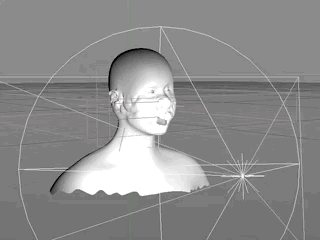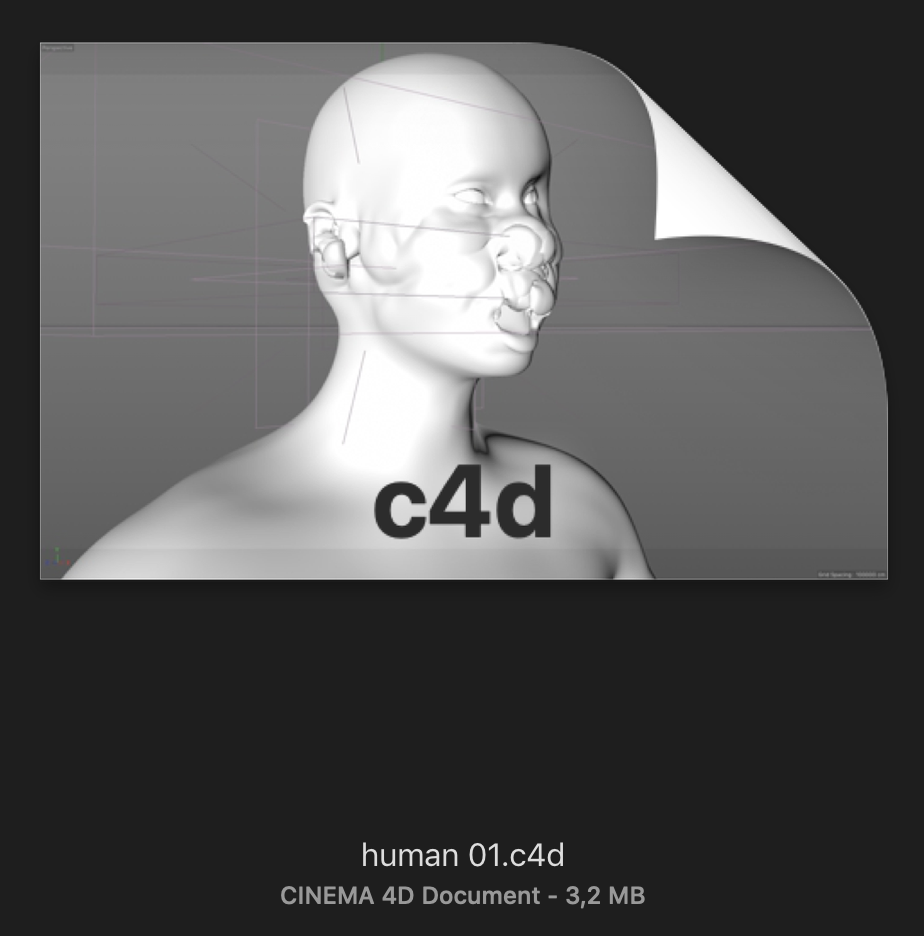squash+stretch logic
Part 2 of a series of 3 short write-ups that serve as an excuse to share some amusing behind-the-scenes material from our turbo-preparations for the Human Voice Sample project. Click here to go to the original portfolio page. And here to read the previous post.
The Apple emoji icons featured in Soumaya’s composition are stylistically indebted to a long history of still and moving cartoons, like the animations of Tex Avery, with their bright colours and grotesque facial features.

Tex Avery is one of the well-known figures from the American animation industry, being responsible for much of the trademark elements in Looney Tunes cartoons, among other things. His name is commonly associated with, in particular, 2 of the “12 principles of animation“: exaggeration and squash-and-stretch. Applying these principles to the emoji was a self-evident step.
The previous post already mentioned how the base black & white photograph from which the emoji bloom forth, doesn’t offer many possibilities for reuse in a typical character-animation workflow. The photo’s subject (the EP’s artist Simon himself!) would definitely remain in a freezeframe state, but we wanted to explore ways to introduce the exaggerated motion and squash+stretch principles into that state.
In each of the 3 animations, we’ve mapped the photo onto a humanoid 3D model, to which we could apply glitches and deformations at appropriate times, according to the rhythm of the music or the micro-narrative within the artwork. On these brief moments, the rigid “sculpture” (the still photographic frame, but in 3 dimensions) would lose structure and twist, bend and undulate like an organic substance. The 3D plasticity of this effect falls in line with some of Simon’s art direction references, like 90s VFX, specifically those in the zany 1994 Avery-homage The Mask with Jim Carrey. The intense flopping of the 3D skin, however, reveals glitches and artifacts that are unmistakably digital, similar to work by artists like Weirdcore.
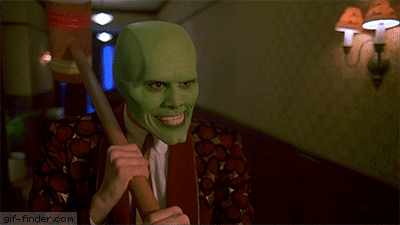
The Mask (1994) 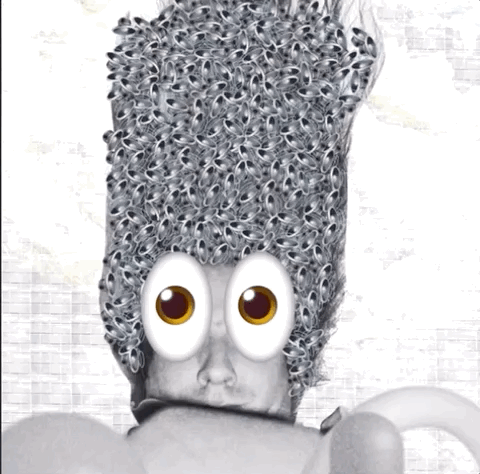
Order Of Operations Test (2019)
Before Avery, one of the old masters of cinema Sergei Eisenstein noted that the unique power of the animation medium (he wrote about early Disney, mainly) was to overcome the laws and limitations of the physical world. In animation, any object or substance can come to life, bend, stretch and morph into any other conceivable form. He likened it to the idea of the “protoplasm”, a sort of master cellular organism that holds the potential to grow into any imaginable form, never being attached to that particular form’s physical parameters. The obvious example is Disney’s Skeleton Dance in which living bones lose all rigidity and stretch and flop about as if they are made of rubber.
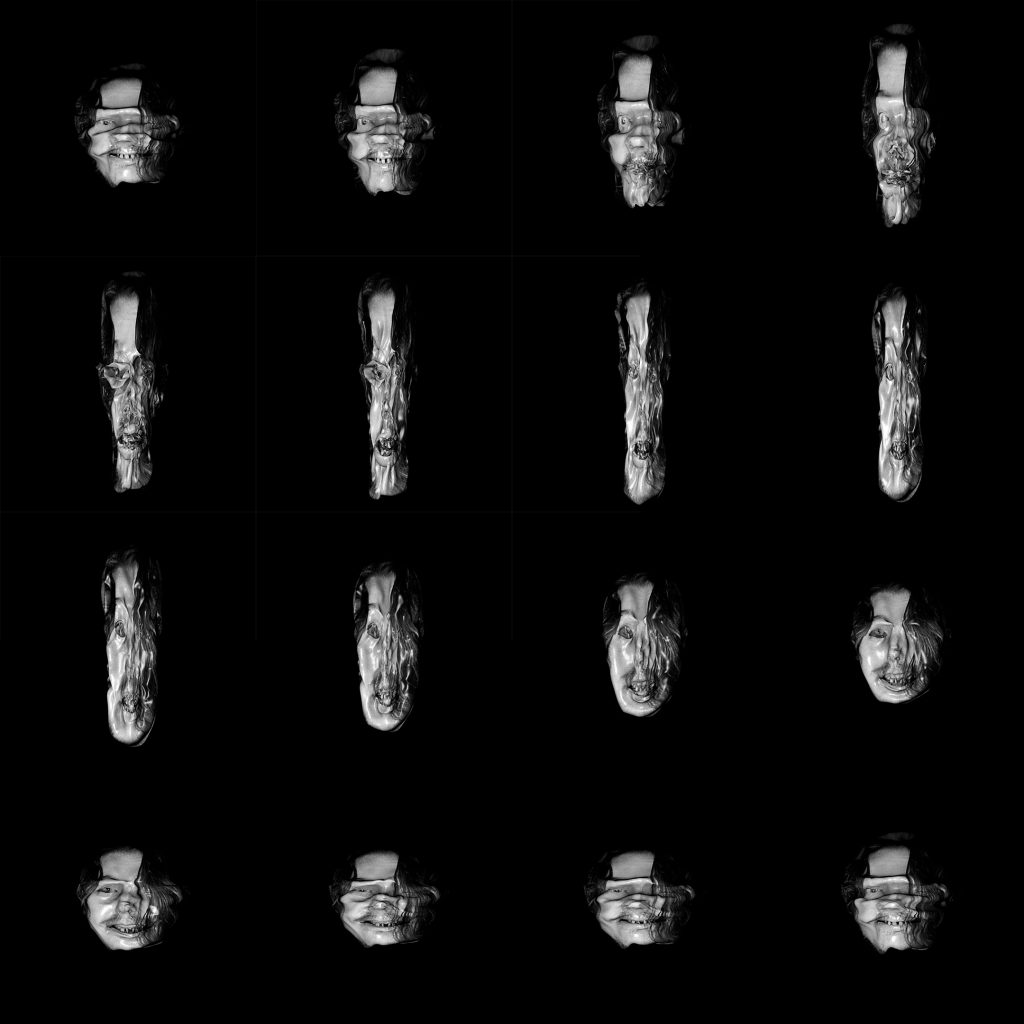
Last time, we mentioned the still frame as being the smallest unit of existence for a motion picture, with, in our case, the emoji acting as a further emojional subdivision within that still frame.
The 3D animation, too, fulfils its subatomic role within the atomic still photo. The digital stuff is an effective protoplasm. Within the usually imperceptible span of 1/24th of a second, a multiverse of mental processes may take place, each distorting its host’s body-perception. The glitches and facial contortions are Masks that subliminally act upon their wearer’s behaviour. The final animation for the HVS EP, is the clearest example of the different masks that possess a single still frame, a single moment in time.
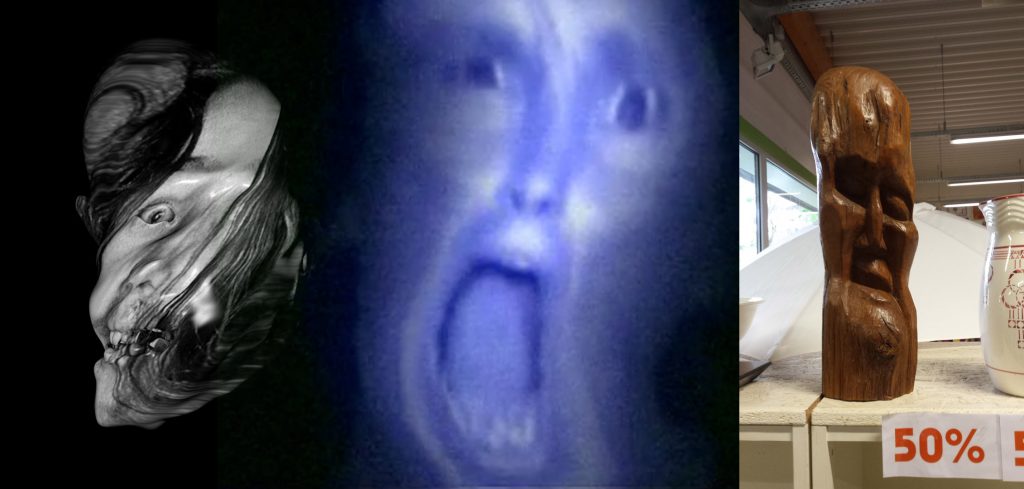
Of course this entire associative analysis is made after the fact. None of this was planned in any such theoretical way. It’s always a straight-ahead intuitive process. Incidentally, according to ancient and recent Mask-play theories, spontaneous creative expression is often exactly the result of wearing a literal or metaphorical mask. The glitched out 3D masks sparked their own creation without the animator being aware of them until they took form on the screen. I may be going nuts here, but yes, I think The Mask made me do it. ?
Find the full Human Voice Sample EP on the BXL Records bandcamp: https://bxlrecords.bandcamp.com/
